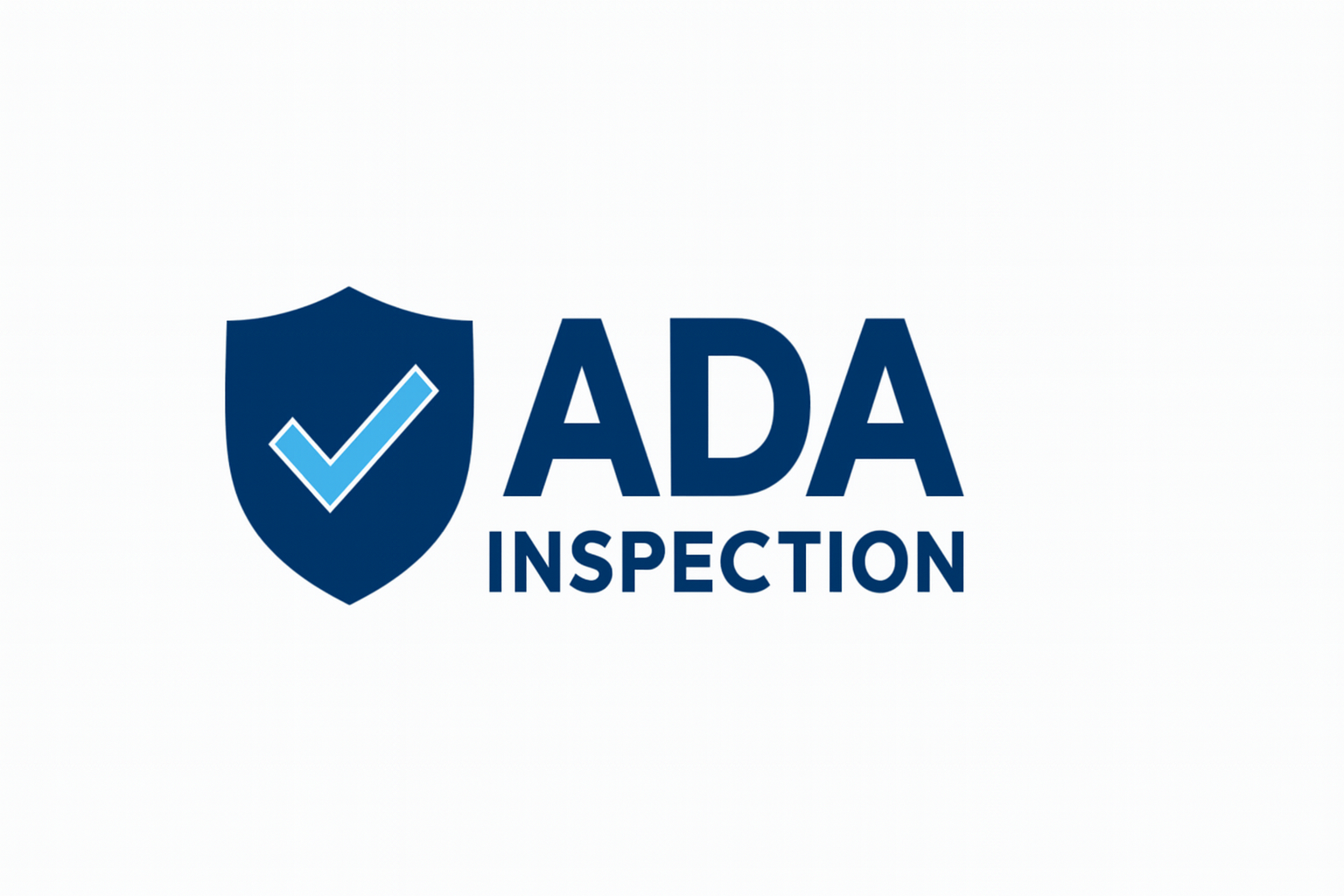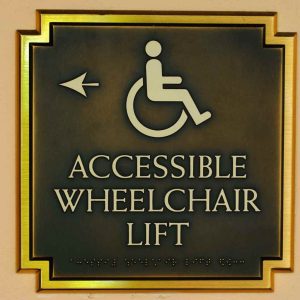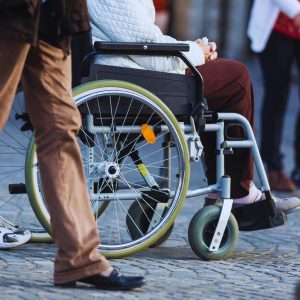Imagine this: someone uses a wheelchair to approach your property, but the sidewalk is cracked, uneven, or sloped too steeply. They stop, turn around, and file a complaint—or worse, a lawsuit.
ADA sidewalk requirements in California refer to the legal standards that ensure sidewalks, walkways, and access routes are usable for people with disabilities. These rules come from the Americans with Disabilities Act (ADA) and are strengthened by California’s Title 24, which sets stricter specifications for slope, width, surface conditions, and curb transitions.
If your sidewalk connects to a public entrance, parking lot, or right-of-way, it falls under these laws—even if you didn’t build it. This article explains what the rules actually say, what inspectors look for, and how to fix problems before they turn into legal or financial risks.
Why ADA Sidewalk Compliance Matters for California Properties
-
Your sidewalk can get you sued. If someone trips or can’t access the building safely, you may be legally responsible—even if the issue seems minor.
-
California law is stricter than federal rules. Title 24 adds extra detail to ADA standards, especially for slope, width, and transitions.
-
You’re liable whether you built the sidewalk or not. Maintenance obligations fall on whoever owns, operates, or controls the property.
-
Fixing issues before a complaint saves time and money. A failed CASp inspection costs far less than defending a lawsuit.
If you’re managing commercial space in California, knowing what inspectors look for isn’t optional—it’s how you avoid fines, claims, or forced retrofits.
What Does the ADA Say About Sidewalk Accessibility?
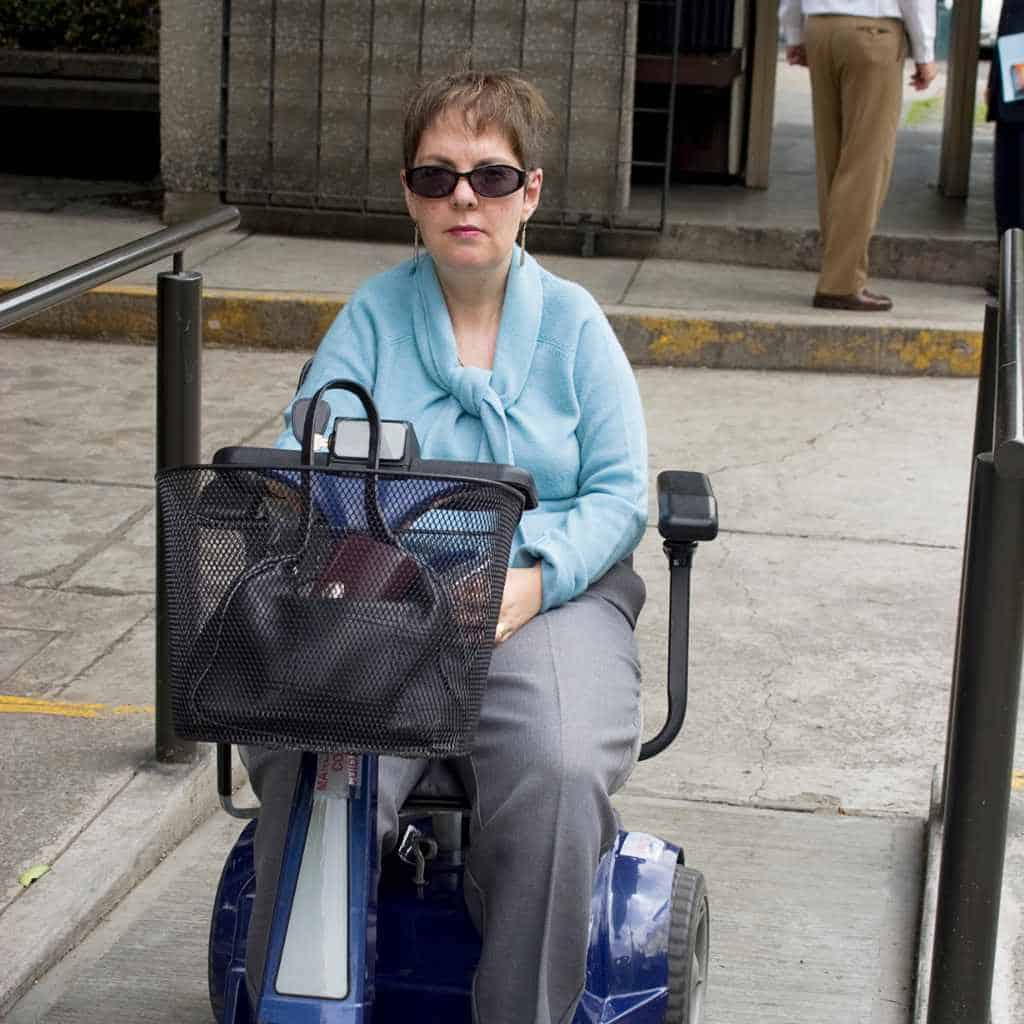
Most people think of ADA requirements as something that applies to ramps and restrooms—but sidewalks are just as critical. Whether you own a strip mall in Riverside or manage a city facility in San Diego, the law doesn’t stop at your front door.
Let’s break down what the ADA actually says about sidewalk access, and what it means for California property owners.
What is required under the Americans with Disabilities Act?
Yes, the ADA sets specific requirements for sidewalk accessibility, especially when those walkways connect to public services or areas open to customers.
Here’s what matters:
-
Accessible Route: A continuous, unobstructed path connecting all accessible elements—like parking lots, building entrances, and public streets. Sidewalks are part of this route.
-
Public Right-of-Way: Areas like sidewalks, curb ramps, and crosswalks that fall under local government control. These must comply with federal standards under ADA Title II.
-
Program Access: Under ADA Title II, public entities (like cities and counties) must ensure that people with disabilities can access the programs, services, and activities they offer—even if that means fixing sidewalks. Private businesses, covered under Title III, must remove barriers that prevent equal access to goods and services, which often includes walkways leading to entrances.
So if someone can’t reach your building because the sidewalk is broken, too steep, or missing a proper curb transition, it’s not just an inconvenience it may be a civil rights violation.
Does the ADA apply to all sidewalks in California?
Yes and no. The ADA applies to most sidewalks, but how it applies depends on who controls the property.
Let’s break it down:
-
Public sidewalks, such as those along streets or near bus stops, fall under ADA Title II. Cities and counties are responsible for maintaining them. That said, if your business uses or connects to that walkway, you may still be liable for keeping the connecting route accessible.
-
Private sidewalks, like those in shopping centers, office parks, or multifamily housing, fall under ADA Title III. If these walkways serve the public—even partially—they must comply. That includes the sidewalk connecting your parking lot to your entrance.
-
Public accommodation rules: If your business is open to the public (e.g., a clinic, restaurant, or retail store), it’s classified as a “public accommodation” under ADA Title III. That means you’re required to ensure equal access, and that starts at the curb—not just inside the building.
Bottom line: if a sidewalk leads to your door, you’re probably responsible for making sure it’s usable for everyone, including people using wheelchairs, walkers, or canes.
California-Specific Laws: Title 24 and PROWAG
Federal ADA rules are the baseline. But in California, the bar is higher and enforcement is tougher. If you’re used to the federal minimums, relying on them in California could still leave you exposed to lawsuits or stop-work orders.
Let’s walk through how California’s Title 24 changes the game, and where PROWAG (the Public Right-of-Way Accessibility Guidelines) fits in.
How does California Title 24 differ from federal ADA?
Title 24 is California’s state building code, and it includes accessibility standards that go beyond the ADA.
Here’s what you need to know:
It’s enforced by the Division of the State Architect (DSA), not just the DOJ.
Unlike the ADA, Title 24 is a construction code, not just a civil rights law. That means building inspectors actively enforce it before permits are approved, during inspections, and when projects are signed off.
Title 24 covers sidewalk details like:
Running and cross slope limits
Surface firmness and stability
Detectable warning strips at curb ramps and transit stops
If you’re building or renovating sidewalks on private property that’s open to the public—or part of a larger development that connects to city infrastructure—Title 24 is in play. And California courts often side with plaintiffs when these rules are ignored, even if the federal ADA threshold was technically met.
What is PROWAG, and does it apply in California?
PROWAG stands for the Public Right-of-Way Accessibility Guidelines. It’s a set of detailed design specs from the U.S. Access Board for sidewalks, crosswalks, and curb ramps in public spaces.
While not yet formally adopted as part of federal ADA regulations, PROWAG is widely treated as the go-to design standard across the country and many California cities use it voluntarily.
Here’s what to know:
California has not adopted PROWAG statewide, but local municipalities—especially in larger cities like Los Angeles, San Francisco, and San Diego—often require PROWAG-level compliance for sidewalk and streetscape projects.
In practice, that means your project may need to meet PROWAG standards even if they’re not technically law yet. Cities may build them into local ordinances, permit checklists, or public works contracts.
If you’re working with city right-of-way, assume PROWAG applies unless explicitly stated otherwise.
So while Title 24 governs most private construction, PROWAG is the emerging playbook for public infrastructure and it’s only becoming more common.
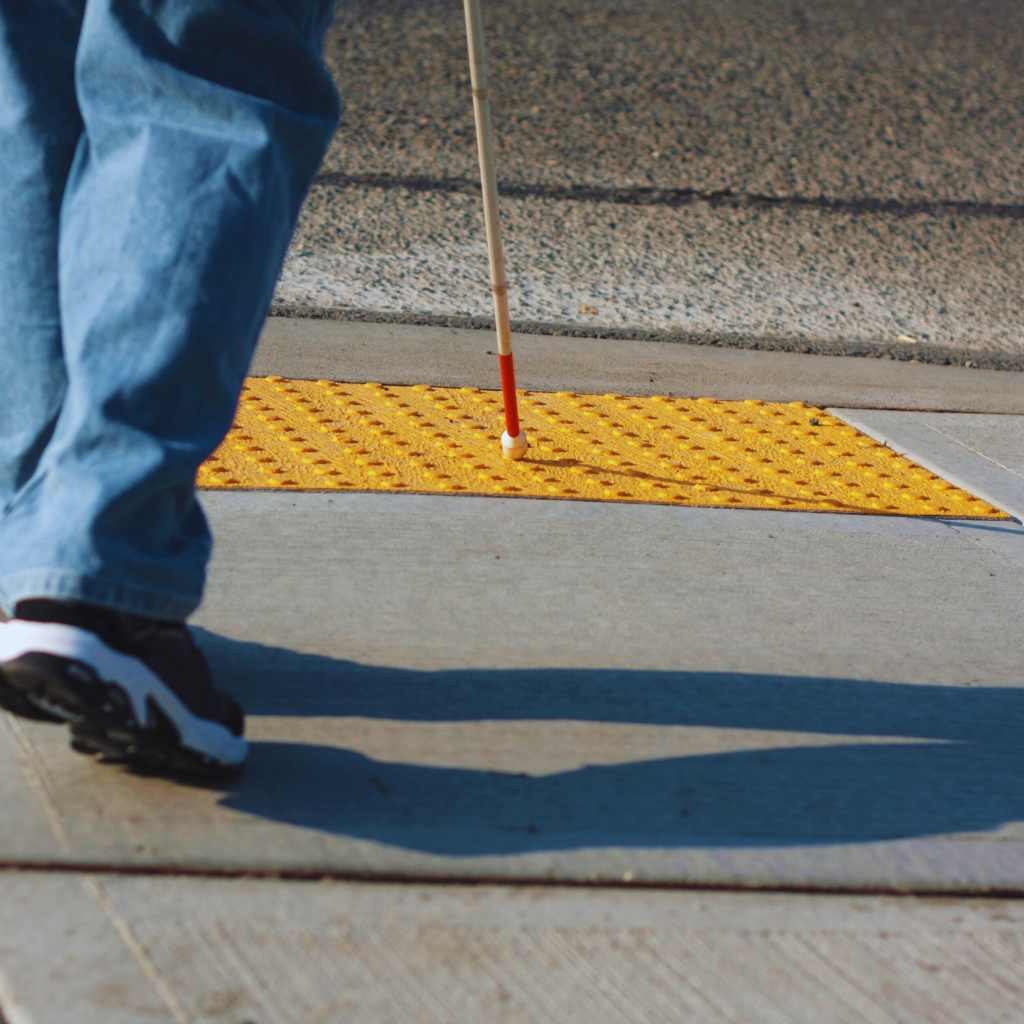
Core ADA Sidewalk Requirements for Compliance
Let’s break down the technical requirements. These aren’t optional they’re the baseline for compliance under the ADA Accessibility Guidelines (ADAAG) and California’s Title 24. If you’re building or maintaining public walkways, this is what inspectors will be checking.
What’s the required width for an accessible sidewalk?
Minimum clear width: 36 inches.
That’s the legal floor for any accessible pedestrian path under ADAAG and PROWAG. The 36 inches must be free of obstructions—no utility poles, benches, or overgrown landscaping narrowing the route.
California Title 24 often enforces wider paths in high-traffic or commercial areas, and passing zones (60″ x 60″) must be provided every 200 feet where space is tight.
What is the legal sidewalk width in California?
At minimum, 36 inches—but check local codes. Cities like Los Angeles and San Francisco often require more for new construction.
What is the maximum allowable slope and cross-slope?
Slope rules are a common inspection fail and a major lawsuit trigger.
-
Longitudinal slope (in the direction of travel) should match the adjacent roadway. If that’s too steep, handrails or switchbacks may be required.
-
Cross-slope (perpendicular to travel) must not exceed 2%, or 1:48.
Anything steeper risks wheelchair roll-off or loss of traction. If your walkway feels like a ramp, it’s probably out of spec.
What’s the ADA slope requirement for sidewalks?
Longitudinal slope should match the street. Cross-slope: no more than 2%.
What sidewalk surface conditions are ADA-compliant?
Sidewalks must be:
-
Firm
-
Stable
-
Slip-resistant
That means no loose gravel, soft asphalt, cracked concrete, or slick coatings.
Vertical changes in surface (like a lifted slab) can’t exceed ¼ inch unless they’re beveled. If the change is over ½ inch, it must be treated as a ramp—complete with slope limits and side protection.
Real-world issue: Tree roots in older neighborhoods often push up sidewalks, creating trip hazards and non-compliant discontinuities.
Are curb ramps and detectable warnings mandatory?
Yes—and they’re heavily enforced.
-
Curb ramps are required at every pedestrian crossing. They must align with the crosswalk and have compliant slopes and flared sides.
-
Detectable warnings—those bumpy surfaces with truncated domes—must span the full ramp width and be at least 24 inches deep.
In California, yellow truncated domes are standard for visual contrast.
Do curb ramps need detectable warnings?
Yes. Curb ramps without them are considered non-compliant in most cities across California.
Legal Risks of Sidewalk Noncompliance in California
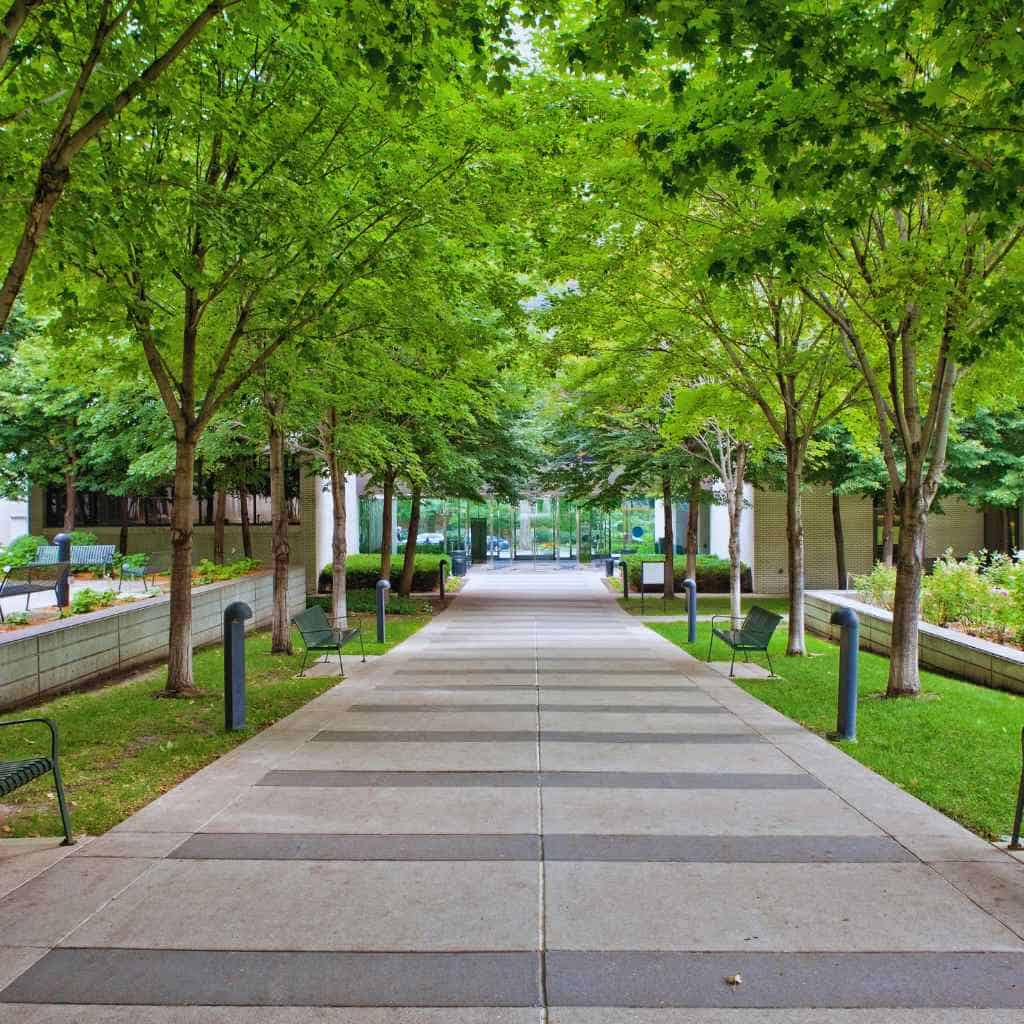
Here’s what many property owners overlook: ADA violations don’t need to involve malice or intent. If your sidewalk doesn’t meet access standards, you can be sued—even if you didn’t know it was out of compliance.
What happens if my sidewalk doesn’t meet ADA rules?
You’re opening the door to liability under both federal and California state law.
-
ADA Title III allows individuals to seek injunctive relief—in other words, force you to fix the problem.
-
Under the Unruh Civil Rights Act (California Civil Code § 51), plaintiffs can seek a minimum of $4,000 per violation, plus attorney’s fees.
This adds up fast. One poorly built curb ramp or lifted concrete panel can trigger a five-figure lawsuit.
Real-world scenario: A small business owner in Los Angeles was fined after a customer with mobility issues couldn’t safely access the entrance due to a broken section of walkway. The claim? “Failure to provide equal access.” Settlement and repairs cost over $15,000.
Can property owners be sued for sidewalks on public property?
This is where it gets murky—and risky.
In California, abutting sidewalks (the ones directly in front of your property but owned by the city) are often your responsibility to maintain, especially if:
-
Your lease agreement makes you responsible
-
Your city ordinance places duty on adjacent property owners
-
You’ve altered the sidewalk in any way (e.g., new curb cuts)
Even if the city owns the sidewalk, courts have held owners liable when a trip hazard wasn’t reported or repaired. The defense “it’s not mine” doesn’t always hold up.“ My tenant tripped on a raised sidewalk in front of my building—am I liable?”
Maybe. If your lease puts maintenance on you, or the hazard was visible and ignored, you could be named in the lawsuit even if the city technically owns the sidewalk.
Sidewalk Inspection and Maintenance for ADA Compliance
Staying compliant doesn’t mean waiting until someone files a complaint. Regular inspection and proactive repairs are the best way to protect your property—and your legal standing.
How do I know if my sidewalk is ADA-compliant?
Start with a Certified Access Specialist (CASp) inspection. In California, a CASp report gives you legal documentation of known issues and a timeline for corrections. It won’t make you lawsuit-proof, but it can limit your liability and buy time to fix violations before someone files a claim.
Some property owners use digital slope tools to self-check surfaces, but without training, it’s easy to miss subtle grade changes or surface flaws. For commercial or multi-tenant properties, hire a professional who knows ADA and Title 24 codes inside and out.
If you’re not sure where your sidewalk stands, it’s worth bringing in a CASp inspector who understands California sidewalk codes—especially for things like slope, width, and curb ramp access.
What common sidewalk problems lead to lawsuits?
It’s not always the obvious stuff. Here are three issues that show up in claims again and again:
-
Tree root lifting — creates abrupt changes in level that trip up wheelchair users or people with low vision.
-
Uneven joints — even a quarter-inch difference without a bevel can trigger a violation.
-
Missing curb ramps — especially at corners in older developments, these are often overlooked but mandatory.
Lawsuits often focus on predictable hazards that weren’t corrected. If a surface looks dangerous, assume it’s noncompliant until proven otherwise.
What’s the best way to fix a noncompliant sidewalk?
Depends on the violation.
-
Minor height differences? Concrete grinding may bring it within limits.
-
No ramp at a crossing? You’ll likely need professional curb ramp installation to meet ADA and Title 24 specs.
-
Widespread damage or poor slope? Full slab removal and replacement is often the only safe option.
Some property owners delay repairs to avoid cost, but that strategy rarely pays off. A $3,000 fix now can prevent a $30,000 settlement later.
ADA Responsibilities for Property Owners vs Municipalities
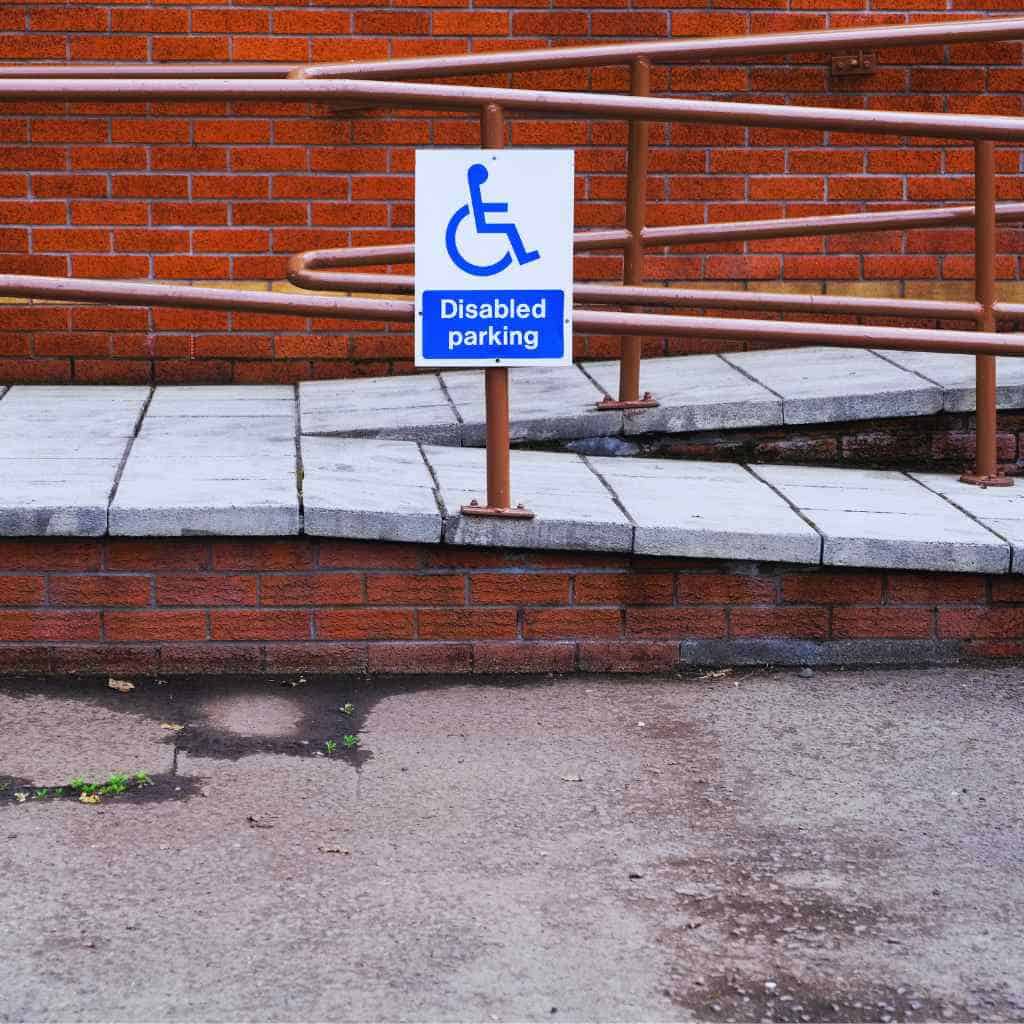
Who’s responsible for sidewalk maintenance in front of a business?
This depends on where your property is—and what the city says.
In many California cities, the adjacent property owner is responsible for maintaining the sidewalk, even if it’s technically public land. Local ordinances often make business owners liable for damage, trip hazards, or deterioration in front of their buildings. If someone gets hurt because of cracked pavement or improper slope, you could still be named in a lawsuit, even if you didn’t install the sidewalk.
City maintenance codes and municipal rules usually spell this out clearly, but many business owners don’t realise they’re on the hook until it’s too late.
If you’re leasing the space, review your lease agreement. Some commercial leases shift maintenance obligations (and legal risk) directly to the tenant—especially in triple net (NNN) leases.
What if the sidewalk is technically on city property?
Here’s where things get tricky.
Even when the sidewalk is part of the city’s right-of-way, you may still share responsibility. California courts have held businesses and landlords liable when they fail to repair or report known hazards—especially if the city can show you had notice and didn’t act.
In some cases, cities require property owners to repair sidewalks at their own expense, then reimburse partial costs. Others may issue citations or notices of violation if sidewalks aren’t kept in ADA-compliant condition.
This means you can be liable even without owning the land. That’s why many risk-conscious landlords opt for regular inspections or include indemnity clauses in lease agreements to protect themselves.
Financial Help and Risk Reduction Strategies
Are there grants or tax credits for sidewalk ADA upgrades?
Yes—but most business owners miss them.
If you’re making ADA upgrades to sidewalks or entrances, the IRS offers a Disabled Access Credit (Form 8826). This can reimburse up to 50% of eligible costs, capped at $5,000 per year, for small businesses with gross receipts under $1 million or fewer than 30 full-time employees.
The credit applies to expenses like:
-
Installing or upgrading curb ramps
-
Widening sidewalk paths
-
Fixing cross-slope issues
-
Adding tactile surfaces or detectable warnings
At the local level, some California cities and counties offer funding or incentives for accessibility improvements—especially in redevelopment zones or older commercial districts. These programs change frequently, so it’s worth checking with your local building department or ADA coordinator.
How does a CASp inspection protect you legally?
A Certified Access Specialist (CASp) inspection is one of the most effective ways to reduce your legal risk—especially in California, where ADA lawsuits are common and costly.
If you get inspected before a claim is filed, and receive a report identifying compliance issues, you may qualify as a “qualified defendant” under California law (Civil Code § 55.53). This comes with serious legal advantages:
-
90-day stay of legal proceedings (freezing the lawsuit while you fix violations)
-
Reduced statutory damages, especially if violations are corrected quickly
-
Demonstrated good-faith effort, which judges and juries look for
Put simply: a CASp inspection doesn’t just spot problems—it gives you legal protection while you fix them. If you’re in a high-foot-traffic area or manage older properties, this could save you thousands.
ADA Sidewalk Compliance Questions California Owners Actually Ask
Do I need ADA-compliant sidewalks if my building isn’t open to the public?
Yes — if there’s any public-facing element.
Even if the building itself isn’t open to the public, ADA rules still apply if there’s a sidewalk used by the public or if the space is leased to businesses that are open to the public. Think parking lots, shared walkways, or nearby access paths. These are often overlooked—and frequently cited in lawsuits.
How often should sidewalks be inspected for ADA compliance?
At least annually, or whenever conditions change.
Tree roots, ground shifting, or nearby construction can all impact sidewalk slope or surface. Best practice? Schedule a CASp inspection every 1–2 years, especially if you’ve had no recent upgrades. Some cities even require routine maintenance reports for commercial properties.
Can tenants be sued for ADA sidewalk violations?
Yes — depending on lease terms and usage.
If the lease assigns maintenance responsibility to the tenant, or if the tenant modifies the property (e.g. outdoor displays, patio seating), they can be liable for access barriers. But landlords usually still carry primary responsibility under the Unruh Civil Rights Act. Always review your lease language and local laws.
Is it okay to install temporary ramps or mats?
Only as a short-term fix — and only if they meet specs.
Temporary solutions must still meet ADA slope, surface, and transition edge standards. That means no steep wedges, slick surfaces, or makeshift plywood boards. If you’re waiting on permanent repair, use professionally made portable ramps rated for ADA compliance.
Are sidewalk repairs covered by insurance?
Sometimes — but don’t assume.
General liability or commercial property insurance might cover sidewalk-related incidents, but most policies exclude code violations or deferred maintenance. If a lawsuit alleges you ignored known issues, your coverage could be denied. Some carriers require documentation of ADA compliance for coverage.
ADA Sidewalk Checklist for California Properties
Quick-reference guide for self-auditing your site. Use this list before an inspection, after a repair, or during a walk-through with a contractor.
✔ Minimum width: 36 inches clear — no permanent obstructions in the accessible route
✔ Cross-slope: 2% maximum (1:48) across the walking path
✔ Surface condition: Must be firm, stable, and slip-resistant — no loose gravel or slick finishes
✔ Curb ramps: Required at all street crossings and transitions from sidewalk to roadway
✔ Detectable warnings: Truncated domes, 2 feet deep, full curb width — required at ramp entries
✔ Vertical changes: No elevation gaps over ¼ inch unless beveled; no trip hazards
✔ Tree root impacts: Regularly monitor lifting or cracking near roots — address proactively
✔ Lease agreements: Spell out who’s responsible for sidewalk maintenance and liability
This list doesn’t replace a formal inspection, but it gives you a solid starting point before problems escalate.
Make Sidewalk Access Part of Your Risk Strategy
Sidewalk access isn’t just a design detail — it’s a legal line item that can hit your bottom line if ignored.
If your property doesn’t meet ADA or Title 24 requirements, you’re open to lawsuits under both federal and California law. That includes fines, legal fees, and reputation damage, even for what feels like a “small” oversight — a missing curb ramp, an uneven slab, or no tactile warnings.
Here’s the thing: proactive compliance almost always costs less than a settlement. And in many cases, it’s tax-deductible.
If you haven’t had a formal assessment, now’s the time. Bringing in a CASp inspector to review your sidewalk and exterior paths gives you legal protection (qualified defendant status) and a plan to fix issues before someone else finds them.
Don’t wait for a complaint to find out you’re exposed. Sidewalk access is part of your risk strategy — treat it like one.
Verified Legal Sources for ADA and Title 24 Sidewalk Rules
-
ADA Title II & Title III Regulations (U.S. Department of Justice):
https://www.ada.gov/regs2010/titleII_2010/titleII_2010_withbold.htm
https://www.ada.gov/regs2010/titleIII_2010/titleIII_2010_withbold.htm -
2010 ADA Standards for Accessible Design (ADAAG):
https://www.ada.gov/regs2010/2010ADAStandards/2010ADAstandards.htm -
California Building Code (Title 24) – Chapter 11B: Accessibility to Public Buildings, Public Accommodations, Commercial Buildings and Public Housing
https://www.dgs.ca.gov/BSC/Codes#@ViewBag.JumpTo -
PROWAG (Public Right-of-Way Accessibility Guidelines – Proposed Final Rule):
https://www.access-board.gov/prowag/ -
California Division of the State Architect – CASp Program:
https://www.dgs.ca.gov/DSA/Services/Page-Content/Division-of-the-State-Architect-Services-List/Certified-Access-Specialist-CASP -
IRS ADA Tax Credit (Form 8826):
https://www.irs.gov/forms-pubs/about-form-8826 -
California Unruh Civil Rights Act:
https://leginfo.legislature.ca.gov/faces/codes_displaySection.xhtml?sectionNum=51.&lawCode=CIV
